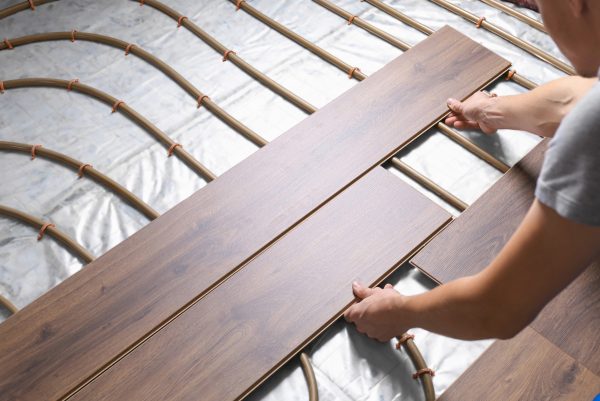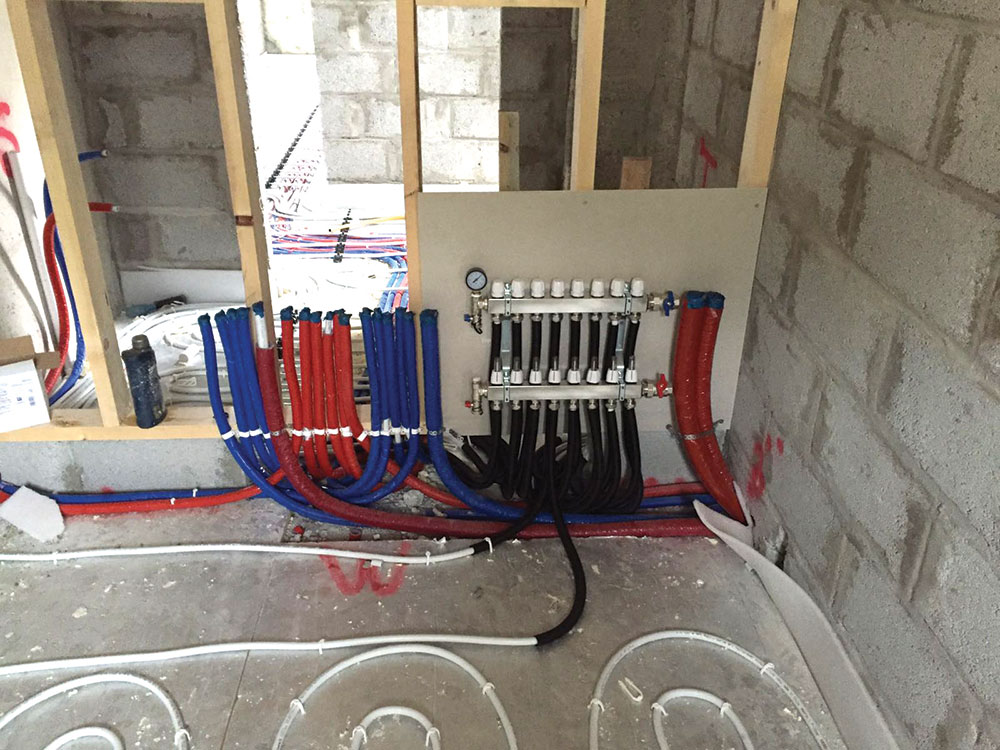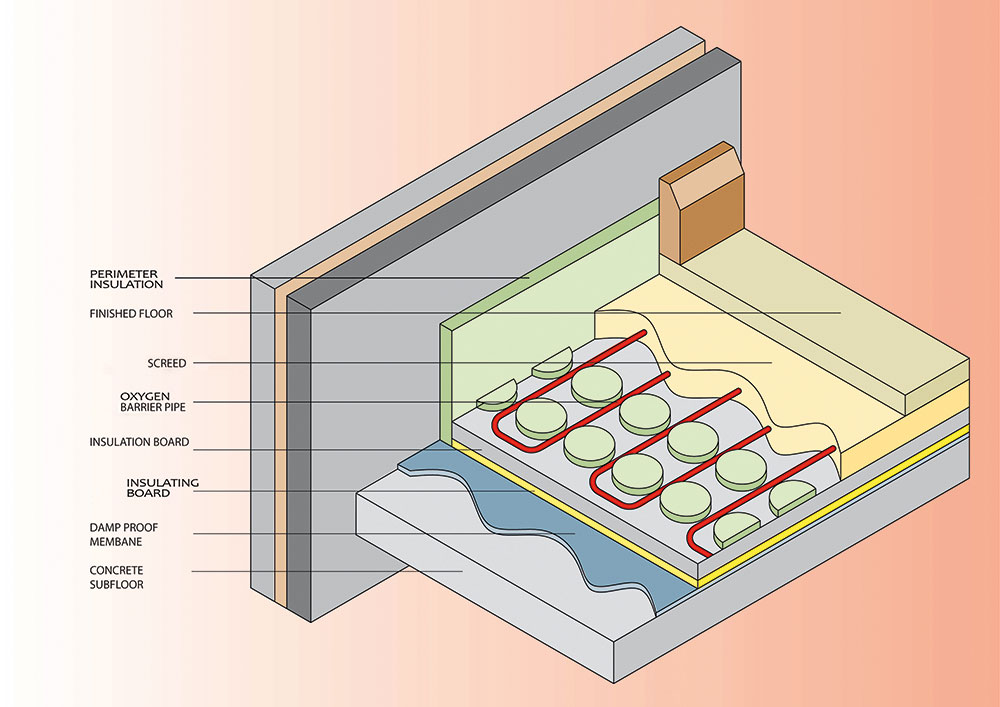There are many advantages to go with heating your home through your floor; here we look at the downsides to underfloor heating.
In this article we cover:
- What is underfloor heating
- Difference between wet and electric systems
- 10 downsides to underfloor heating
- What to know about installing underfloor heating
Slow response time
If you want or need a heating system that reacts quickly then underfloor heating is not for you. It can take 30 to 60 minutes for a floor to warm up and much longer for it to heat the actual air in the room because it takes time for the warm water to circulate throughout the underfloor piping and heat up the screed, pipes and floor covering before anything starts to heat the room itself.
If the underfloor heating is run off a boiler, you’ll be switching off the boiler for periods of time partly to save on energy costs. Coming into your cold home after many days/weeks of no heating, or because there’s a sudden cold spell (when you’ve had the heating off for days), then heating the place up quickly cannot be done.
If you have a heat pump and allow the heating controls to do their job year-round, i.e. tell the heat pump when to kick in for space heating, you should be able to keep the room to a constant room temperature, at a low running cost. Heat pumps work at their best in homes that are well insulated and airtight. Nowadays heat pumps often provide hot water as well, which means the system runs year-round.
[adrotate banner="58"]If you have lots of furniture and rugs, these, too, trap heat within the floor and the room won’t
heat up efficiently.
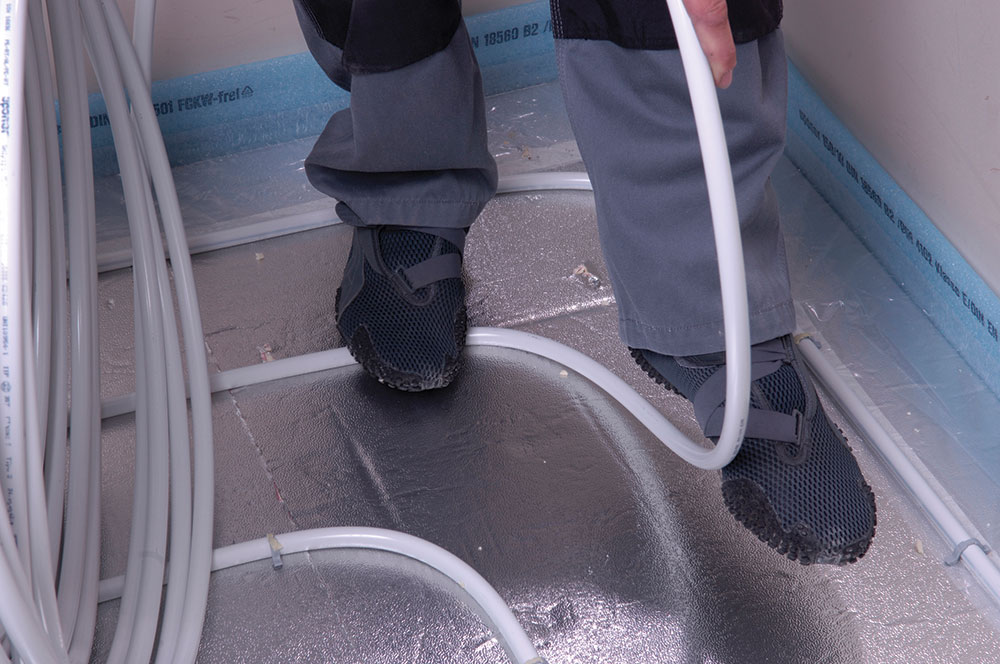
What is underfloor heating?
Just like radiators, it’s a type of heat emitter – meaning it releases heat to warm up the space you live in. Underfloor heating systems are either electric or wet.
Wet underfloor systems consist of a series of pipes laid in your floor, fed by your central heating system. If you’re using a heat pump, the water flow temperature will be adequate. But if you run your wet underfloor heating on fossil fuels, such as a gas or oil boiler, the set up will need to cool down the high temperature coming from the boiler to feed the underfloor system. You can’t have the floor temperature higher than 27degC, and what this involves is a lot of cooling from the average fossil-fuel boiler temperature.
Electric underfloor heating systems run off mains power and are usually only used on a small floor area, or in a larger space that has a low need for space heating, i.e. well insulated and airtight. They come in mats that are rolled out and are very thin so suitable for retrofits where floor height can become an issue. Remember though that you need to insulate under underfloor heating mats/ pipes to prevent the heat from going down into the subfloor
Restricts your choice of flooring
Ceramic tiles and stone surfaces are best because they heat up quickly, readily transfer their heat
to the air and store heat once the system is turned off. Everything else reduces heat transfer from the warm water or electric cables to the air. Engineered timber flooring can work well, as can laminate and even lino but ask a professional before committing yourself to a floor covering.
This is especially important if you want carpet. Carpets are rated for their insulating properties,
using a tog system. Always use one with a tog rating of less than 1.5. And don’t forget the underlay. Thick underlay can add a further 1.0 tog, resulting in very little heat coming through and into the room. If you want to have luxurious carpet and a good underlay you may need to choose another type of heating for that space.
Complex control systems
Underfloor heating relies on a lot of background tech. A complex set of specialised equipment including manifolds, actuator heads, flow valves, pumps and thermostats must all function properly for the system to work. When any of this goes wrong there’s no option but to call in the experts. This can be expensive.
Expensive to install
Electric underfloor systems are relatively cheap to install, even allowing for the cost of a qualified
electrician to connect them up, but hydronic ones that rely on water filled pipes are really expensive. These pipes have to be laid in a special way and carefully fixed, being sure not to damage them, then covered in a screed. Then all the manifolds and controls have to be installed and this too is expensive.
Time consuming to install
Both electric and warm water systems can involve using self-levelling screed. This takes time
to dry thoroughly before the heating can be started up. It is also vital to warm a new floor slowly (perhaps over days) so as not to damage the new screed. All this can hold up the progress of your build.
Electric versions are expensive to run
Although electric underfloor systems are quick and cheap to install compared with warm water
versions, they are much more expensive to run. This means most people use them only for small
areas, such as bathrooms.
Hard to repair
Although a competent professional can usually find the break in an electric underfloor cable, it is often expensive to get to it and mend it, partly because it usually means destroying the floor surface.
This is still, however, much easier than finding and mending a leak in the underfloor pipes of a wet system. In fairness, though, properly installed, meticulously tested, high quality underfloor heating pipes hardly ever leak.
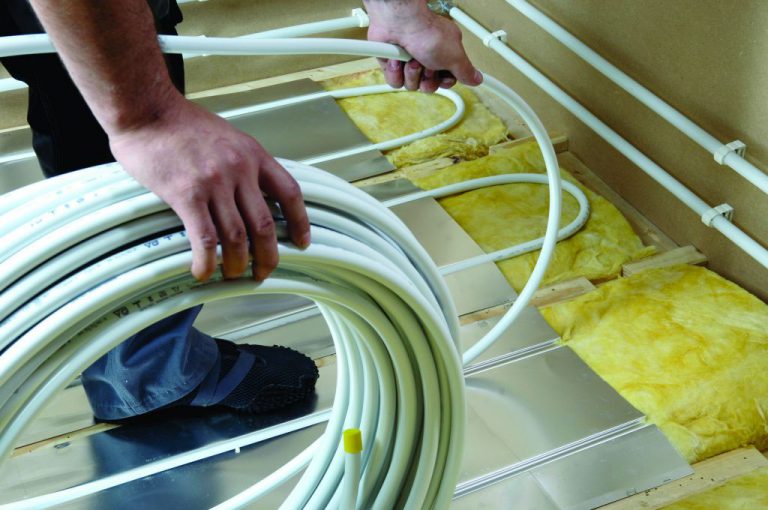
Floor height problems
Retrofitting underfloor electric mats or cables involves very few challenges on floor height but this isn’t true for warm water ones. There are now, however, some very thin water systems that can be only 16mm deep, but you’ll have to allow for insulation underneath and this can further add to the floor height issue. The vast majority of underfloor installations are, of course, done on new builds, when it’s simple to allow for the extra floor thickness required.
Uncomfortable for some
In a busy family household not everyone will be a fan of a hot floor. Some children complain
about playing on them and some pets find them uncomfortable.
Loss of attractive radiators
There is a huge selection of radiators available today that underfloor heating lovers miss out on entirely. Some can be highly attractive in themselves, virtually never go wrong, and can provide instant heat in a way underfloor never can. And they don’t necessarily have to take up wall space. Various types of heat emitters can be installed into a channel around the edge of a room within the floor, and today there are radiating wall and ceiling panels that do away with conventional radiators altogether.

